When you purchase mugs, you may encounter a wide variety of different materials. Choosing the most suitable may seem difficult. So this post will help you get a further understanding of 9 common cup materials, and you can decide which one suits you best.
Explore 9 exquisite materials for mug making
Glass
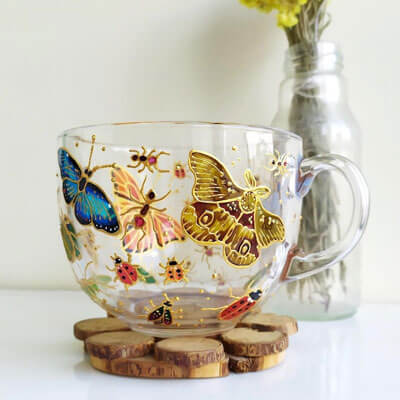
Glass is the most popular material for manufacturing mugs. Due to its transparency, it can clearly showcase the color and appearance of beverages, providing a better visual experience. Glass mugs do not have any impact on the quality of water, and can maintain the original taste of the drink. However, their downside is that they are fragile and not easy to carry around.
Plastic
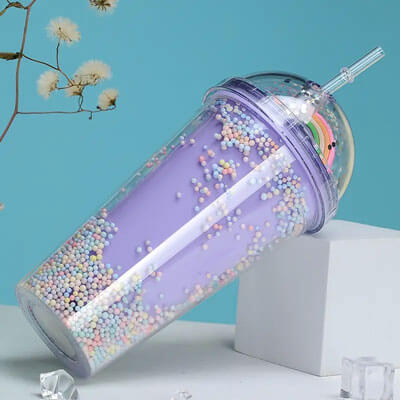
Plastic is another popular material for making mugs. It features light weight, durability, and multi-colors. Among them, PET, PC, and PP are commonly used. PET mugs are often used for coffee cups, as they have high transparency and are suitable for cold drinks. PC has good strength and durability, but it is not heat-resistant. PP plastic cups have good heat resistance and insulation properties. It can be molded into various shapes and colors without fading easily.
Wheat straw
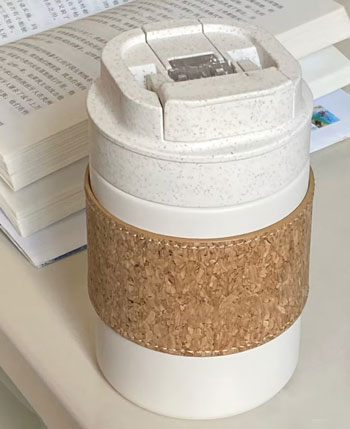
This material is highly environmentally friendly as it can directly biodegrade and is also renewable. It is lightweight and durable, although not as sturdy as metal or porcelain cups. The most common material found on the market is a composite made by mixing wheat straw fibers with biodegradable polymers such as PLA. This combination provides improved durability and thermal stability.
Metal
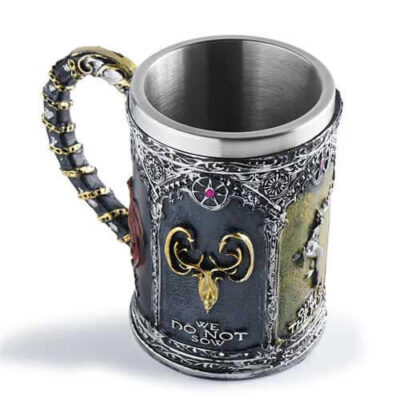
There are many types of metals to choose from, such as stainless steel, copper, aluminum, etc. If you want to make a thermos, you can choose stainless steel mugs. It has excellent insulation, corrosion resistance, and durability.
If lightweight is a key factor for you, such as making travel mugs or tumblers, aluminum, and titanium are better options. They are both lightweight and sturdy, making them suitable for outdoor adventures, camping, and hiking. If you like a unique appearance and texture, a copper-made mug might be an interesting choice. Additionally, copper is often used for serving chilled beverages such as iced wine and iced coffee.
Paper
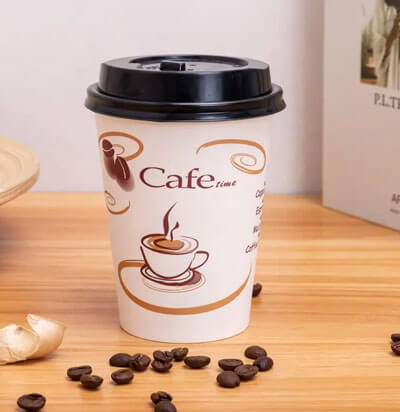
Mugs made of paper feature lightweight and easy portability, as well as being low-cost. Moreover, they can be recycled after disposal, which is why many beverage shops and coffeehouses like Starbucks use them. The two common paper materials used are paperboard and double-walled paperboard. The latter provides better insulation and it is often used for holding hot drinks during the winter season.
Stoneware
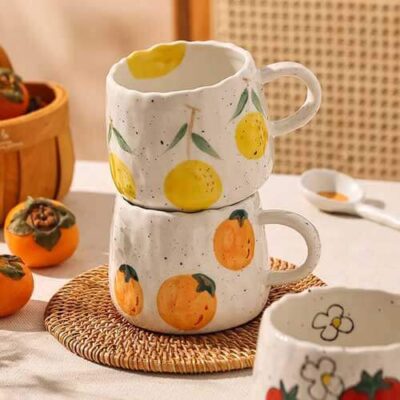
Stoneware material has a natural stone-like texture and unique patterns, as well as high hardness and wear resistance. Mugs made from this material are aesthetically pleasing and have a long lifespan. Due to its high density, it also has excellent heat insulation properties, making it suitable for making insulated mugs.
However, it is important to note that this material is heavy and inflexible, so it is not suitable for making cups that require lightweight and portability.
Porcelain

Porcelain is a solid, neutral material, so it does not absorb or transfer flavors, allowing coffee or tea to maintain its intended taste. This material has a delicate and exquisite appearance. And due to its high-temperature firing process, intricate designs can be created with clarity and precision. As a result, many cup factories use it to create high-end tea cups or Demitasse mugs for coffee.
However, due to the complex manufacturing process and high cost of raw materials, the overall price of ceramic mugs is higher than those made from other materials.
Enamel

Enamel is easy to process and can be used to create mugs in various styles, such as retro or modern. During the manufacturing process, a layer of glaze is often applied to the surface of the mug. So it could be resistant to scratches, cracks, and fading, and also increase its durability. In addition, it is easy to print patterns by heat transfer or screen printing. Many mug factories also use hand-drawn designs for added attractiveness and delicacy, but this option comes at a higher cost.
Wood
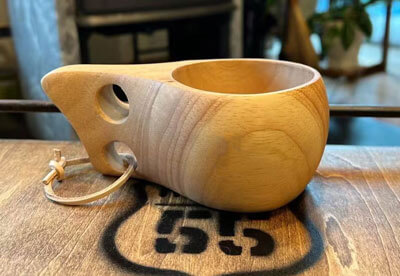
Wood is solid and durable, with its own texture and patterns. And it is easy to process to have a high aesthetic value. Wood has excellent insulation properties and warm-keeping performance. Many mug manufacturers use it in combination with stainless steel to make insulated cups. Additionally, wood is highly renewable, and after its use, it can be reused or recycled, reducing its negative impact on the environment.
Despite these advantages, wood also has some drawbacks. One significant disadvantage is its high moisture absorption, which can result in uneven deformation and mold growth.
4 considerations before choosing mug materials
When choosing materials for production, it is often necessary to consider the following factors.
Safety
A mug is a container for drinks or tea. The materials used must meet food safety standards to ensure they are safe and don’t release harmful substances, keeping the user healthy and safe.
Grip and comfort
Mugs always come with handles. So when using them, you must consider the principles of ergonomics to ensure. It helps ensure the cups are easy to grip and do not cause discomfort or fatigue in the hand. In addition, the comfort of the grip is also affected by the surface treatment of the material, the design of the shape, and the handle.
Durability
The mug needs to withstand frequent daily use and cleaning. So a durable mug can provide a good user experience. If it is a thermos mug, attention should also be paid to its insulation performance after prolonged use.
Eco-friendly
As people’s concern for environmental protection grows, an increasing number of individuals are opting for reusable cups made from recyclable materials. This choice aims to minimize resource consumption and mitigate environmental impact.
As a leading sourcing company in China, we have helped 1000+ clients source and customize mugs from China. We have long-term cooperative suppliers who are experienced in making different styles of mugs, such as travel cups, temperature control mugs, etc. You just need to tell us your requirements. We will assist you in dealing with all things related to the products and ship them to your doors as required.
Discover the best materials for premium mugs
- 20+ years of experience
- 200+ manufacturers
- Strict QC


Leave A Comment